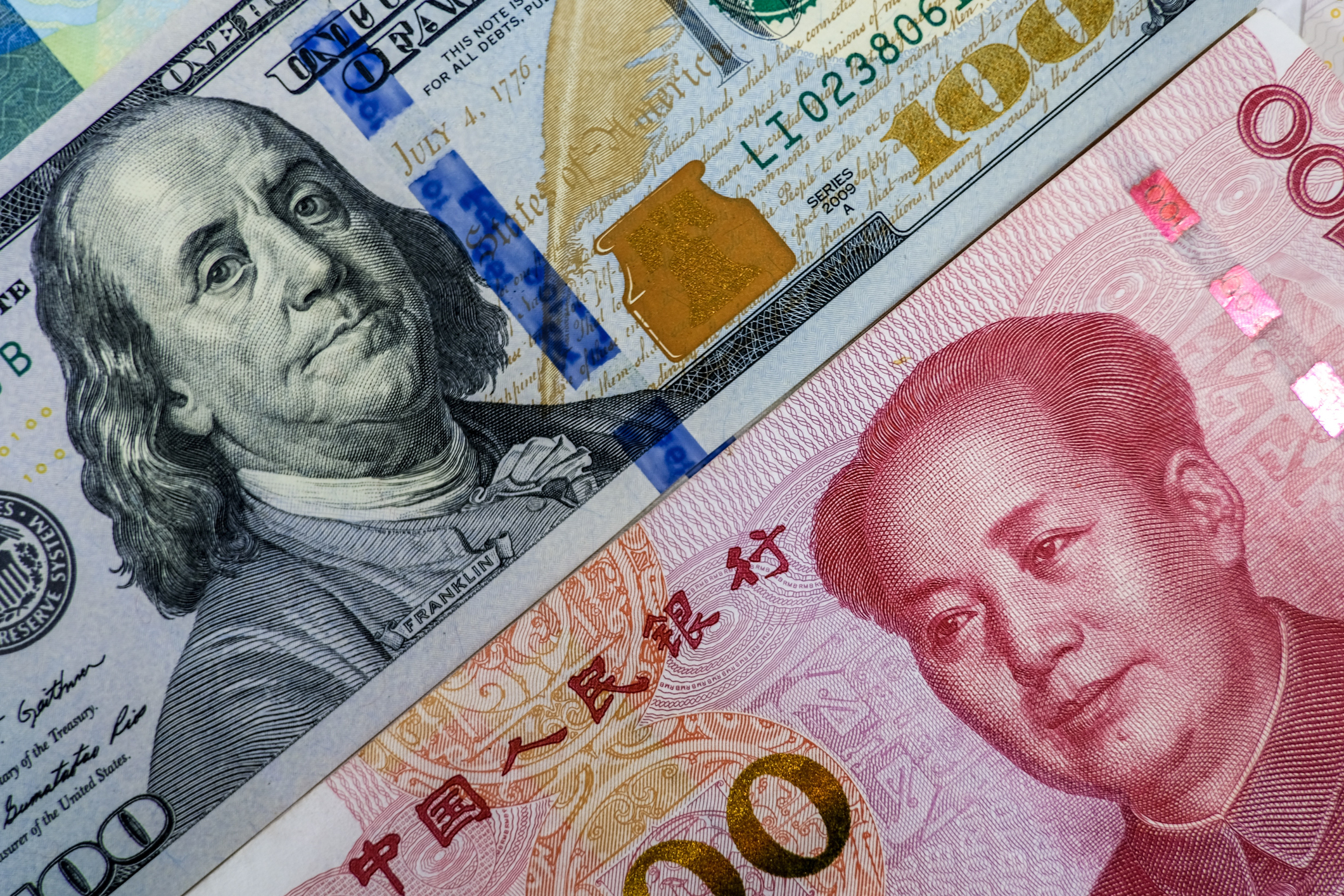In January 2013, the Obama White House released a White Paper on “National Strategy for Global Supply Chain Security: Implementation Update.” It was a short document, only 22 pages, almost wholly focused on the security of transport – of ships, air freight, the mails – against terrorism and other threats. What traveled through the supply chain, and from where, does not appear to have been a major concern.
In June 2021, the Biden White House published a “100-day review” entitled “Building Resilient Supply Chains, Revitalizing American Manufacturing and Fostering Broad-based Growth.” It is focused on a very different concept of what the “supply chain” is; the term now encompasses the entire spectrum of upstream production. The Biden review takes these up in four areas: semiconductors, high-capacity batteries, critical minerals, and pharmaceuticals.
One might ask, why these four areas and not others? There is no clear answer, and it may be that choice was mainly bureaucratic. The review was compiled from separate reports by four cabinet departments: Commerce, Energy, Defense, and Health and Human Services. Had the Department of Agriculture been asked, or the Department of Transportation, one might have gotten different choices. Petroleum comes to mind. Or natural rubber – the linchpin of World War II in the Pacific.
If there is an Ariadne’s thread to these four areas, it is the trading and competitive relationship with China. The reports do not focus solely on China and give what is largely a fair-minded and wide-ranging assessment of vulnerabilities in each sector. For the reader not previously immersed in the structures of semiconductor production or the technology of electrical storage, this document, at 250 pages, is a mine of information. But China lurks in each section, sometimes looming large, in other places only in the background.
The global semiconductor industry is here described in fascinating detail. It is a paragon of extreme specialization, relentless technological improvement, economies of scale, and global division of labor. US firms dominate in semiconductor design and integrated production; Japan produces the wafers; Taiwan and (to a much smaller degree) South Korea do high-end fabrication in “contract foundries,” while China handles a substantial share of low-end chips and of “packaging” – a term that covers the placing of chips into circuit boards including, of course, the assembly of smartphones. American-based production is only 12 percent of the world’s capacity, roughly a third of what it was in the 1990s.
To characterize broadly, the semiconductor supply chain is a network of unique nodes, in which a given firm has one upstream supplier for many major components and perhaps just one downstream customer, creating a web of bilateral monopolies operating in extreme interdependence. Thus a breakdown anywhere along the line can disrupt the entire system. This is, by the way, very much the classic problem of Soviet-style industrial structure, designed to maximize efficiency at each node (in the Soviet case, a matter of scale), but fragile as events in the early 1990s showed.
The review calls attention to several specific events that have led to recent and ongoing shortages in semiconductor supply. These include a fire in March at a facility in Japan and the freeze in February in Texas which took a trio of Austin facilities off-line for up to a month. But the most important was not itself a natural event but rather the reaction to one. As Covid-19 took hold, key figures in the industry shifted capacity to household applications. They failed to anticipate how quickly demand for vehicles would recover as the pandemic waned.
The problem is that chip production takes a lot of time; it is characterized to an extreme degree by what economists of the Austrian school call “roundaboutness.” The multiple steps (etching, doping, and so forth) are repeated “hundreds of times”; producing a single chip “can take up to 26 weeks.” So once locked into a program, the industry has the margin of maneuver, roughly, of the Ever Given in the Suez Canal. Meanwhile, the automakers who have designed a hundred or more distinct chips into their new cars must sit and wait. This accounts, no doubt, in part for the surging prices of used vehicles and the current scarcity of rental cars.
What then is the “China threat” to the semiconductor supply chain? The most important one is stated very plainly. China is the world’s largest semiconductor market, both for home use and for incorporation into products sold elsewhere. The single biggest risk from China is not some nefarious disruption of components or materials. It is rather, a possible fall in the final demand. The review is clear and unambiguous on this point:
“US semiconductor companies… thus have the potential to be significantly impacted by trade restrictions between the United States and China, with major potions of their revenue at risk of long-term disruption. Based on the Chinese government’s ambitions in regard to the semiconductor industry, these revenue sources may be at risk regardless, but given that their ability to reinvest is immediately dependent on sales to China, their long-term viability is immediately affected by actions that decrease sales.” (p. 57.)
The review goes on to note that since much of the industry operates on the two banks of the Taiwan Strait, “Even a minor conflict or embargo could have immediate major disruptions to the United States and long-term implications for US supply chain resilience” (p. 57). In a White House document, at this moment of heated China-bashing, this is a welcome realism.
With large-capacity batteries, the principal supply-chain issue is not so much a science-driven matter of design and engineering as it is access to key materials, most notably nickel, graphite, cobalt, and lithium. With these materials, it appears reserves are not particularly scarce, although in the case of cobalt they are concentrated in the Democratic Republic of Congo, where mining conditions are tactfully described as being “outside of international practice.” The review notes that China’s advantage in materials supply results, mainly, from having invested in finding reserves on its own territory.
But, it turns out, industrial dominance in this area does not rest on the supply side. It lies rather in the development of the industry itself, driven by demand for electrical storage, which is overwhelmingly in the automotive sector. China is the low-cost producer because it is the world’s largest user, consuming 40 percent of global large-capacity battery output. Europe accounts for another 40 percent, and the United States for just 13 percent. Consider this: there are 425,000 electrically-powered buses in the world today. Of these, 300 are in the United States; 421,000 are in China. Perhaps oddly for a report on the supply chain, but not unreasonably under the circumstances, the recommendations in this section are relentless: the United States should work to bolster demand.
In the report on critical materials, prepared by the Pentagon, thirty-eight minerals are listed for which US direct import dependence is above 75 percent. Of these, China is a top supplier in eighteen cases. And why is that? Largely, as the report states, because the growth in China’s own demand for these materials has made it profitable for China to invest in the supply chain, hence to become the high-volume, low-cost producer, to whom the world turns.
The Defense Department is naturally concerned with the possible consequences of conflict, and so with the possibility that access to materials might be lost, especially where there is only one source of supply. This is particularly true in the case of “rare earths” – a grab-bag of exotic minerals – where China had 85 percent of the global market as of 2014 – even though the entire Chinese workforce in the mining of rare earths consists of only 4,000 souls, with an additional 40,000 in smelting. Perhaps understandably, not even the Pentagon has a good answer to this problem, apart from conservation, recycling, stockpiling, and being prepared to divert from routine to essential uses in an emergency. The review laments the decline of mining expertise emerging from US university systems, where educational programs have folded as mines have disappeared. But it is hard to see why students would pursue degrees, or universities provide them, in fields for which jobs no longer exist.
With pharmaceuticals, the problem is not of scarcity but of basic economics. The supply chain moved to India because costs are low as befits the low-price, low-margin, high-volume business of generic drug manufacture. Supply chain resilience would thus be a matter of maintaining a “virtual” stockpile, consisting of manufacturing equipment and precursor chemicals, to be held in reserve in case of emergencies. It is important to note that to be useful, the reserve capacity would have to be kept idle – otherwise it adds no layer of safety in the event of a disruption. The review is realistic about the prospects for this: the scale and complexity of the sector, together with the unpredictability of future biological threats, makes it impractical to maintain large reserves in all areas. In an open global market economy, drugs will be bought from where they are cheapest to produce.
In each area, the Review is critical of Chinese practices, which are said to consist of large-scale, “top-down,” “market-distorting,” public investments, subsidies to Chinese companies, state-sponsored industrial rationalization, and in the case of electric vehicles, large subsidies to consumers to spur demand. Thus we read: “The Chinese Government has focused on capturing discrete strategic and critical material markets as a matter of state policy.” (p. 174). Examples given are that in 2002 China “prohibited foreign investors from establishing rare earth mining enterprises in China” and in 2014 consolidated the business in the hands of a “handful of national champions.” Also, back in 1985, China had established a VAT rebate for rare-earth exports, “which contributed to the erosion and the elimination of US production in the global market.”
In this and other instances throughout the Review, the deplorable practices of state planning and national development strategies undertaken by China are, within a few pages, pretty much exactly what the authors recommend for the United States. (The DoD recommendations on critical materials are an exception here, addressing among other things recycling, human rights issues, and environmental concerns, even though these are perhaps somewhat tangential to supply-chain issues per se.) Thus on lithium-ion batteries, we read: “As part of the American Jobs Plan, President Joe Biden has called for transformative investments to spur this demand, including $100 billion in incentives to encourage US consumers to transition to EVs” (p. 134). Similarly on semiconductors: “Consistent with the American Jobs Plan proposals, federal incentives to build or expand semiconductor facilities are necessary to counter the significant subsidies provided by foreign allies and competitors.” (p. 76). How an “incentive” differs from the Chinese practice of “subsidies” is not clearly explained. Nor does the review admit that export rebates on VAT are standard practice everywhere.
Still, from a broad reading and fair appraisal of this genuinely excellent document, two major conclusions may be drawn. The first is that the Chinese advantage – which is by no means absolute in all areas – stems from a pragmatic program of economic development, including infrastructure and human resources, in a vast country able to take advantage of a scale of production and internal market impossible anywhere else. This leads to lower costs across a wide range of industrial and engineering capacities, bolstered by being embedded (as the Review does not point out) in a system oriented toward social stability and steady growth rather than short-term profitability and financial contracts. The Chinese edge – similar to India’s in pharmaceuticals but much more broadly based – is the product of the success of China’s development approach, especially in the post-Mao era, but with roots that go back to the 1949 revolution, to the creation of the People’s Republic and to the restoration of a unitary Chinese state with full control over the nation’s land and resources. This is a fact of life and not an artifact of ruses or dirty dealing.
The second key conclusion is that in critical sectors, in the world we inhabit and from which we cannot escape, US-China interdependence is indefeasible. Rare earths are a minor example, barring new discoveries in other places. Semiconductors are a major one: without the Chinese market, the American firms that presently dominate the high-end design processes would collapse. Bringing manufacturing back to the US, we learn, would come primarily at the expense of allies, including Japan and South Korea as well as, especially, Taiwan. It is hard to see why even the most aggressive China hawk would favor stripping Taiwan of its chip foundries – but even doing that would hardly lessen the dependence of the semiconductor ecosystem on the Chinese market.
So we come to a truly remarkable third conclusion, no less powerful for having been left unstated. It builds on the fact that the integration of the global economy cannot be undone. The division of labor – hence productivity, living standards, and the advance of technologies – is limited by the extent of the market, as Adam Smith wrote in The Wealth of Nations back in 1776. China is a now-developed country with about twenty percent of the human population; its advantages are stability and scale, almost exactly as was true in the 18th century. These advantages cannot now be taken away without destroying the world as it is.
To be sure, the Chinese still, in many important advanced areas, draw from and depend on the United States. Certainly, the US can slow the inroads of Chinese firms in some cases, and certainly the US can foster, as this report recommends, its own advantages in new sectors by maintaining and expanding its research and development base. Certainly, there are many things to be done in the United States to meet urgent environmental, public health, and critical social goals.
But the US position, as an economy with only one-fourth the population, equally now depends on the Chinese market, and on downstream Chinese firms supplying applications to the world. While precautions against natural disasters and pandemics can be taken – up to a point – the central unstated message of this 100-day Review is that the greatest risk to the supply chain, in each of the four areas, is disruption of normal trade relations with China. In short, as an objective economic matter, we learn here, the United States has an overwhelming interest in peace.





